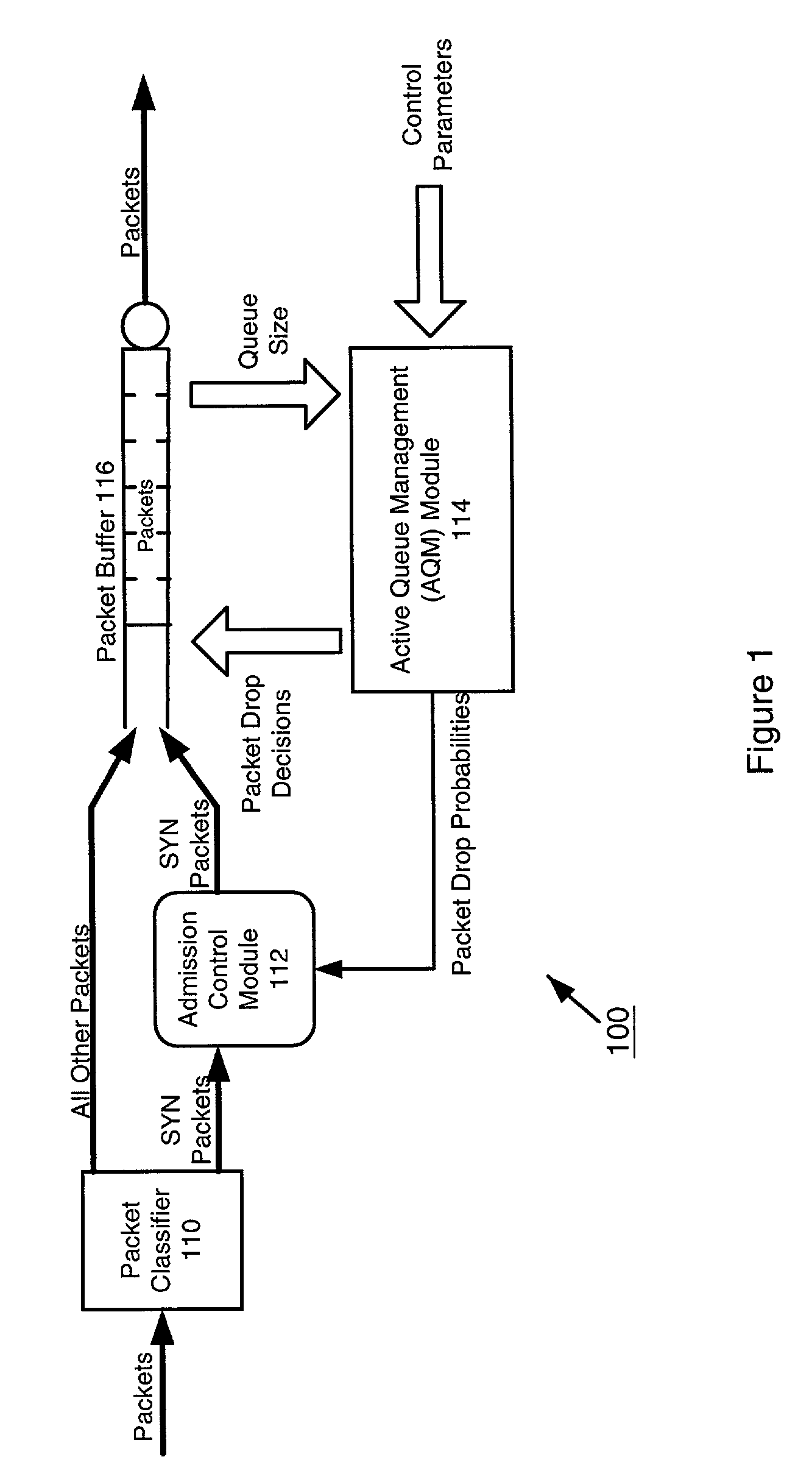Technique for implementing an admission control scheme for data flows
a technology of data flow and admission control, applied in the field of admission control scheme, can solve the problems of long and unpredictable delays, and imminent sporadic and periodically sustained congestion, and achieve the effect of reducing the associated sending ra
- Summary
- Abstract
- Description
- Claims
- Application Information
AI Technical Summary
Benefits of technology
Problems solved by technology
Method used
Image
Examples
Embodiment Construction
)
[0030]The present invention provides an admission control scheme for TCP flows which uses packet drop rates computed by an active queue management algorithm (AQM) for making flow admission decisions. The proposed scheme is simple to implement and dramatically improves delay and loss experienced by users.
[0031]The TCP admission control scheme of the present invention does not require additional measurement or accounting mechanisms beyond those needed for the AQM. In addition, packet drop probabilities generated by an AQM algorithm used in the TCP admission control scheme represent accurate estimates of actual packet loss rates. The packet drop probabilities reflect actual traffic behavior and provide simple measurable and controllable quantities for admission control purposes. Further, the use packet drop probabilities for admission control provides simplicity and an ability to deal with a source that may not be accurately characterized. The present invention allows admission contro...
PUM
 Login to View More
Login to View More Abstract
Description
Claims
Application Information
 Login to View More
Login to View More - R&D
- Intellectual Property
- Life Sciences
- Materials
- Tech Scout
- Unparalleled Data Quality
- Higher Quality Content
- 60% Fewer Hallucinations
Browse by: Latest US Patents, China's latest patents, Technical Efficacy Thesaurus, Application Domain, Technology Topic, Popular Technical Reports.
© 2025 PatSnap. All rights reserved.Legal|Privacy policy|Modern Slavery Act Transparency Statement|Sitemap|About US| Contact US: help@patsnap.com



